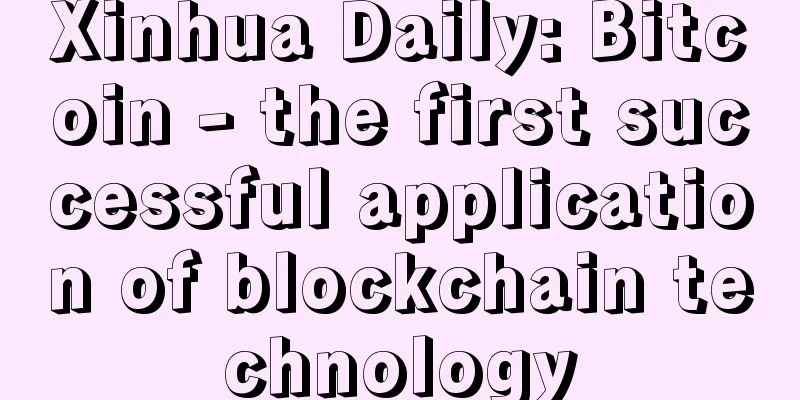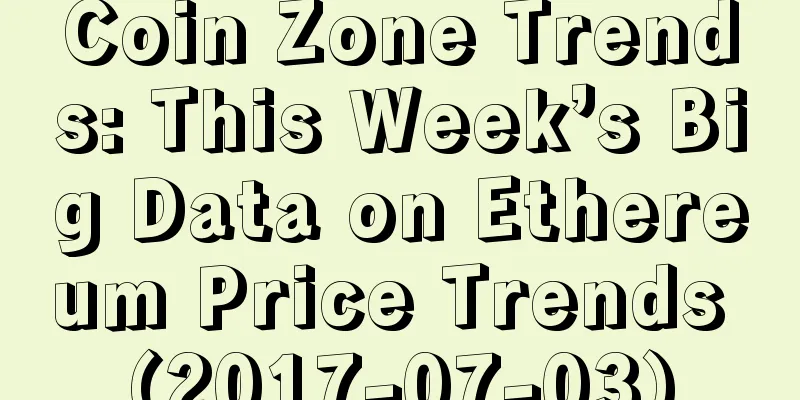Xinhua Daily: Bitcoin - the first successful application of blockchain technology

|
Geng Qiang Luo Yuhan Bitcoin is undoubtedly one of the hottest topics in recent years. Is it an inevitable trend in the future development of currency, or another "tulip bulb" that is being hyped? First of all, Bitcoin is not any tangible currency. Its production and operation are based on the Internet. It is an open source P2P (Peer to Peer) digital "currency". Unlike the gold and silver currencies chosen by early humans for their natural properties, and also different from the fiat money (Fiat Money) that people have been accustomed to for nearly 100 years - paper money supported by national laws and sovereign credit, Bitcoin was completely born in the modern technology Internet era. Bitcoin is the first successful application of blockchain technology. The transaction records of the traditional financial system are stored in the database of the bank center, while the blockchain is the account book of Bitcoin. The ownership and transaction records of Bitcoin generated at any time are recorded in the blockchain account book. Anyone who downloads the client can receive relevant information. The address and private key of Bitcoin are similar to personal accounts and payment passwords. The Bitcoin owned by an individual is locked in a personal address. Only by using a private key can it be unlocked and sent to another address to realize the transaction. During the transaction, a bill will be sent to the entire network, and other users will verify it. Once it is verified, the transaction is successful. The first user who verifies whether the transaction is valid will be rewarded with a sum of Bitcoin. This reward of Bitcoin is divided into two parts: one part is the transaction fee, which is paid by the transferor and is the Bitcoin already in the system; the other part is the newly generated Bitcoin reward by the system. The greater the computing power of the computer, the more likely it is to get a Bitcoin reward. The so-called "miner" is a person who specializes in verifying transaction information and updating records. In general, Bitcoin has the following characteristics: The total amount is limited, and the issuance will not get out of control. The only source of Bitcoin issuance is the basic reward of the system after successful accounting. The basic reward is 50 Bitcoins at the beginning, and the reward will be halved after every 210,000 blocks are created. So far, the halving has occurred twice, and successful accounting will only get 12.5 Bitcoins. It is estimated that by around 2140, the total amount of Bitcoin will reach the upper limit of 21 million. Good anonymity means that the identity of the account owner will not be known to anyone. People can transfer money through Bitcoin at will, without having to verify various identity information like bank transfers, and without having to bind to any bank card. However, this feature also makes Bitcoin widely used in illegal transactions such as money laundering. Currently, the main use of Bitcoin payment is black market transactions and "dark web" transactions. The production and maintenance of Bitcoin consumes a lot of energy. "Mining" requires that each new Bitcoin be produced by performing an encryption process on a high-performance computer to solve a complex mathematical problem. Since the amount of currency obtained from mining is proportional to the computing power of the machine, from a probability point of view, the higher the performance of the hardware, the higher the proportion of computing power among all miners, and the easier it is to obtain Bitcoin. In order to obtain higher returns, "miners" compete with each other in computing power. The combined computing power of the world's top 10 mining pools accounts for 75% of Bitcoin's computing power. The high concentration of computing power and the maintenance of distributed and decentralized accounts require a lot of energy. The price of Bitcoin is prone to large fluctuations. Bitcoin is just a bunch of data. If it is not linked to real legal currency and physical objects, it is difficult to ensure the stability of its price. The promise of national sovereign credit prevents legal currency from depreciating significantly in a short period of time, so people are willing to use legal currency instead of returning to gold and silver currencies. Unlike legal currency, in the absence of legal constraints, physical owners can link or delink with Bitcoin at will, which makes Bitcoin very susceptible to irrational emotions and causes large price fluctuations. |
>>: This person who sells mining machines cannot be judged by common sense.
Recommend
Are women with white eyes beautiful?
There are many kinds of eye shapes in physiognomy...
What kind of fate does the garlic nose face analysis have?
Do people with bulbous noses have good luck with ...
Do you know how to read the lines on your palm?
Do you know how to read the lines on your palm? E...
How to tell the fortune of a woman
Good or bad fortune has already been determined b...
People with tear marks on their faces will encounter obstacles in their love life
In terms of physiognomy, a person also has some p...
What does it mean when a noble person has soft fingers? Does soft fingers mean he is a noble person?
The appearance of a noble person can often bring ...
Is it good for a woman to have a mole on her nose? What does it mean for her fate?
1. Is it good for a woman to have a mole on the b...
What does the Qisha Marriage Palace represent?
The Seven Killing Stars have the characteristics ...
Judging from the forehead type which people are worthy of trust
According to physiognomy, people with a strong fo...
Eyebrows reveal your emotional debt
Eyebrows reveal your emotional debt Sometimes you...
What kind of women are most likely to cheat after marriage?
Nowadays, there are many people who love to cheat...
Five facial features are destined to bring disaster
We can often get a glimpse of some mysteries in a...
Baby's palm reveals future personality traits
People usually think that palm reading is somethi...
The face that gets excited when seeing snow
Many times, people get excited for different reas...
A quick guide to the features and considerations of ETH 2.0 upgrade
1. ETH2.0 upgrade content and planning ETH 2.0 Re...









